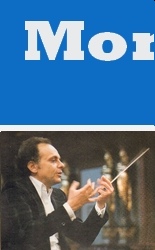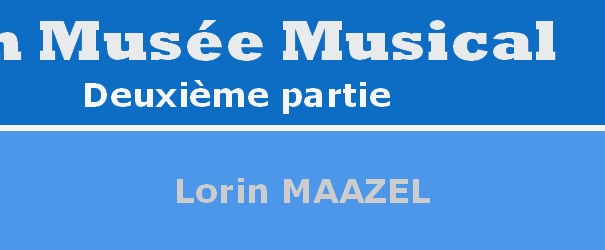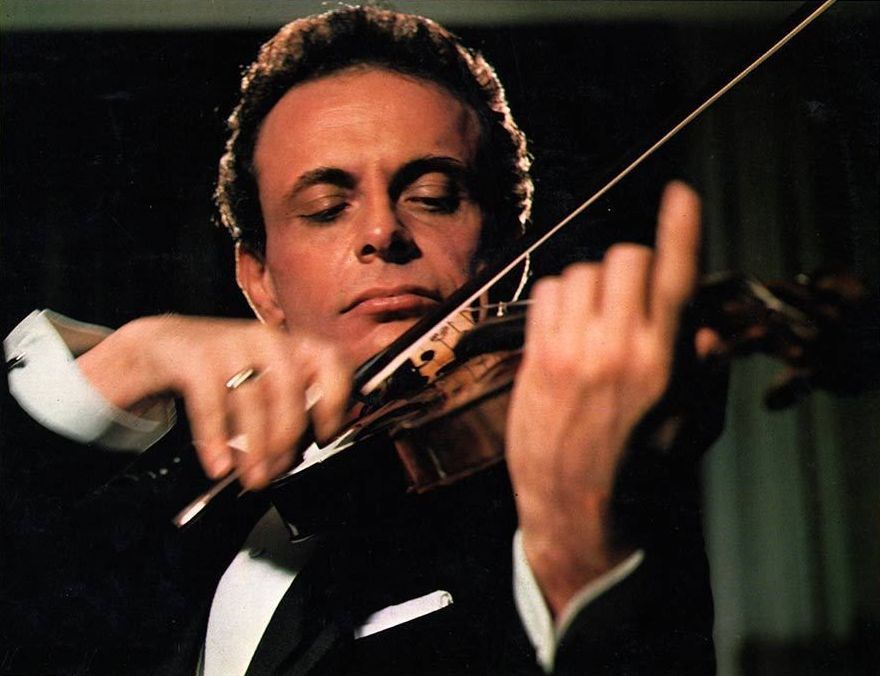Wolfgang Amadeus MOZART
Concerto pour violon No 3 en sol majeur, KV 216
Lorin MAAZEL, violon
Orchestre Radio-Symphonique de Berlin, Lorin MAAZEL
enregistrement de concert de la SFB
Haus des Rundfunks, Saal 1, 10 juin 1963
Voici donc...
Wolfgang Amadeus Mozart, Violinkonzert Nr. 3 in G-Dur, KV 216, Lorin Maazel, Radio-Symphonie-Orchester Berlin, Lorin Maazel, SFB-Konzertmitschnitt Haus des Rundfunks, Saal 1 am 10.06.1963 (1. Allegro 09:05, 2. Adagio 08:41, 3. Rondeau. Allegro 06:07)
que vous pouvez obtenir en...
Une description de l'oeuvre, citée de
cette page en anglais de Wikipedia:
"[...]
I. Allegro
The Allegro is in sonata form, opening with a G major theme, played by the orchestra. The main theme is a bright and happy discussion between the solo violin and the accompaniment, followed by a modulation to the dominant D major, then its parallel key D minor. It experiments in other keys but does not settle and eventually heads back to the tonic, G major, in the recapitulation with the help of the cadenza.
II. Adagio
The second movement is also in ternary form form, and in the dominant key of D major. The orchestra begins by playing the well known and beautiful main theme, which the violin imitates one octave higher. The winds then play a dance-like motif in A major, which the violin concludes by its own. After a conclusion in A, the violin plays the main theme again, remaining in the same key. When it should have sounded A natural, it sounds A sharp, and the melody switches to B minor, in a fairly tragic passage. It soon modulates back to A major, and to the home key of D major through the main theme. After the cadenza, and in a quite unusual thing for Mozart to do, the violin plays the main theme again, thus concluding the movement in D.
III. Rondeau
The third movement is a Rondeau Allegro, and opens with an orchestra theme which gave the concerto its nickname: "Straßburg". After a lonely, short passage by the oboes only, the solo violin enters with a different melody which modulates to D. A brilliant and high passage in D is soon followed by a descending arpeggio-like melodic line which eventually leads to the G string and repeats itself. After the second time, the violin plays the lonely oboe line from the introduction. A chromatic scale then leads to the "Straßburg" theme with the violin playing. The orchestra imitates the violin and abruptly changes to B minor and a B minor violin theme: exactly the same theme as in the first violin solo, played in the relative minor key. As the theme itself repeats, it once again abruptly changes to E minor. The small E minor cadenza introduces the orchestra, which once again plays the "Straßburg" theme in G major. After a couple of bars in D major by the orchestra, the music goes from Allegro to an Andante in G minor, almost in the fashion of a scherzo-trio form. The strings play saltando quavers while the violin plays a note-rest small melodic line which repeats itself and eventually leads to a G major Allegretto. The violin plays a crotchet-only playful theme, while the orchestra plays brilliant and fast threesome up-and-down notes, in a way that the solo violin's part acts as a background only. The parts switch and now the orchestra plays the playful theme, while the violin gets to show off by playing fast notes. The quick passages stop for the violin to play a more ceremonial theme played on the D and A strings, in the fashion of a Musette. This pattern sounds two more times until the violin concludes the fast theme with a low G, and switches to Tempo 1. After a few bars, the first solo theme that the violin played is played as a variation in A minor. The violin plays the "Straßburg" theme in G minor, and the orchestra imitates it in the usual form of G major. After the typical first solo variation, this time in the tonic key. The violin plays another small cadenza which leads to the last "Straßburg" theme played in two octaves. The orchestra plays it one third time in the lower octave. Instead of ending the concerto in a pompous way, Mozart chose to end it instead with the lonely oboe theme in G major played piano, adding the feeling of a musical "disappearing". [...]"


